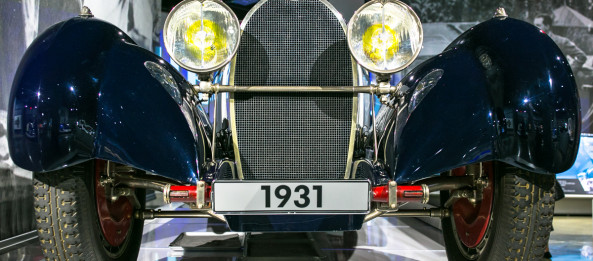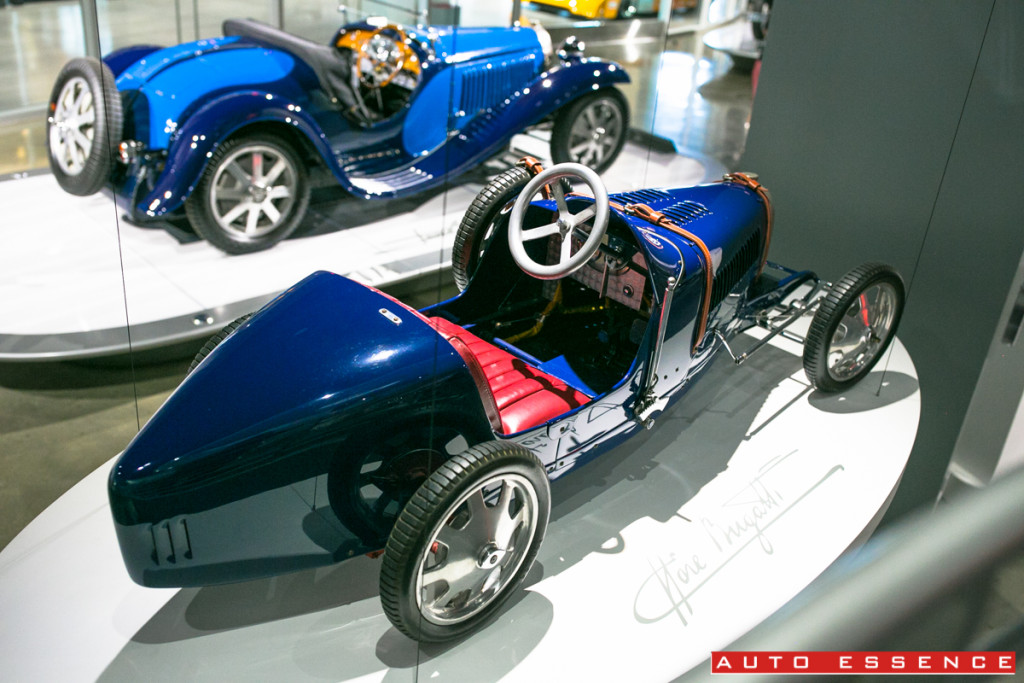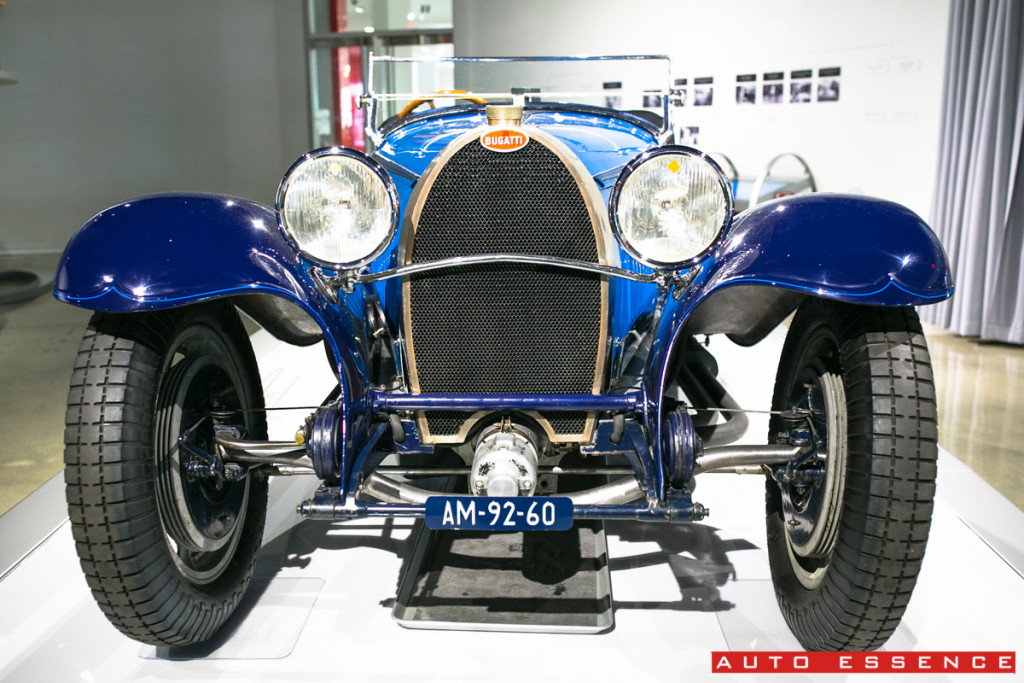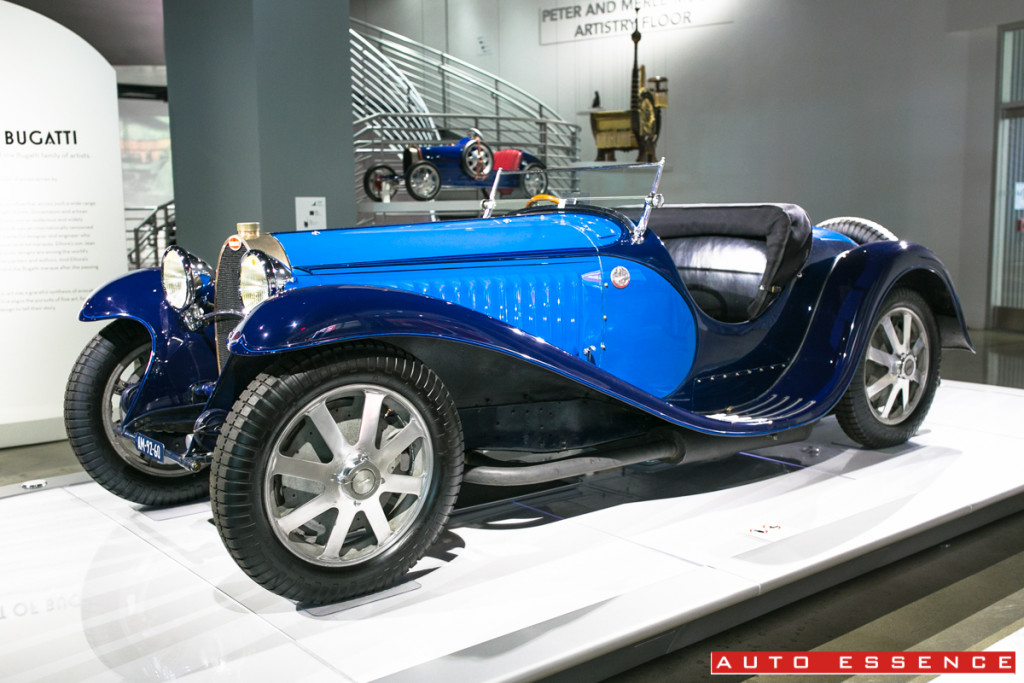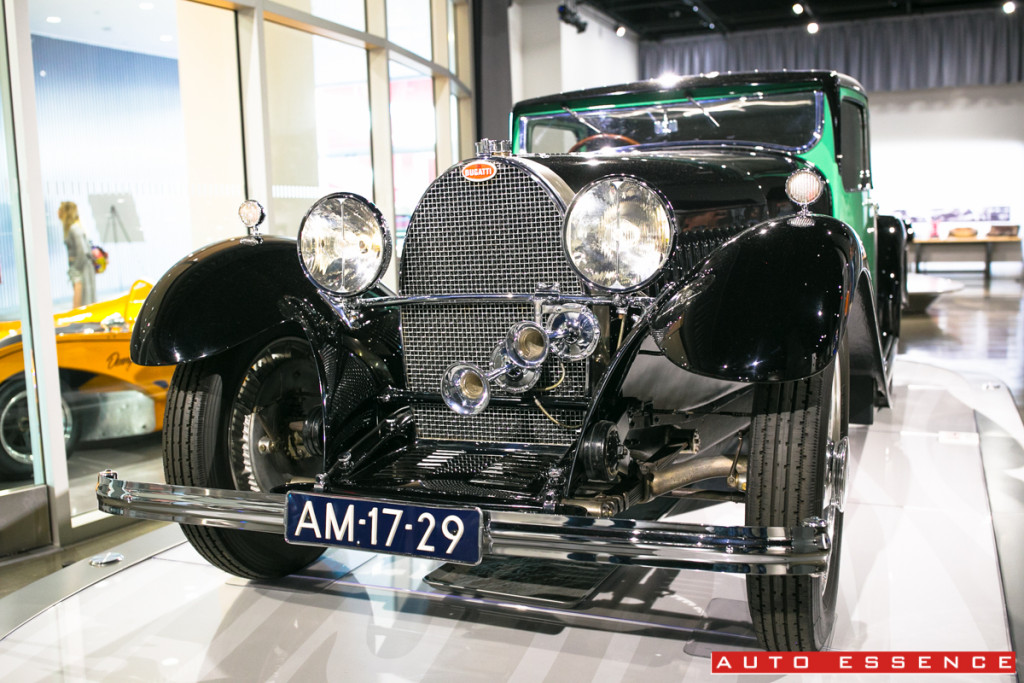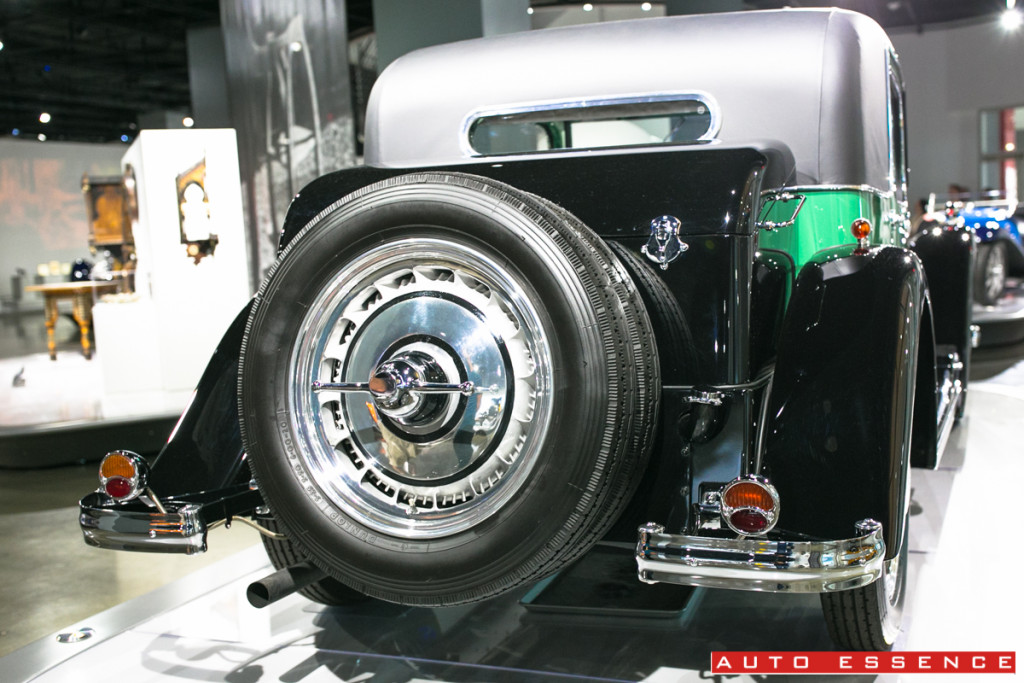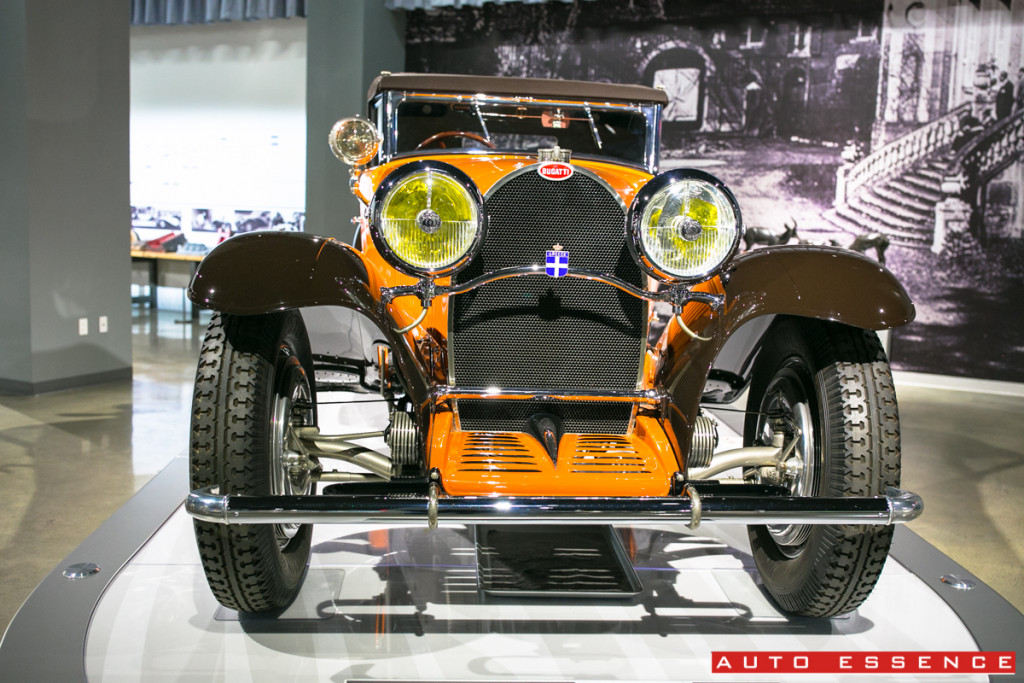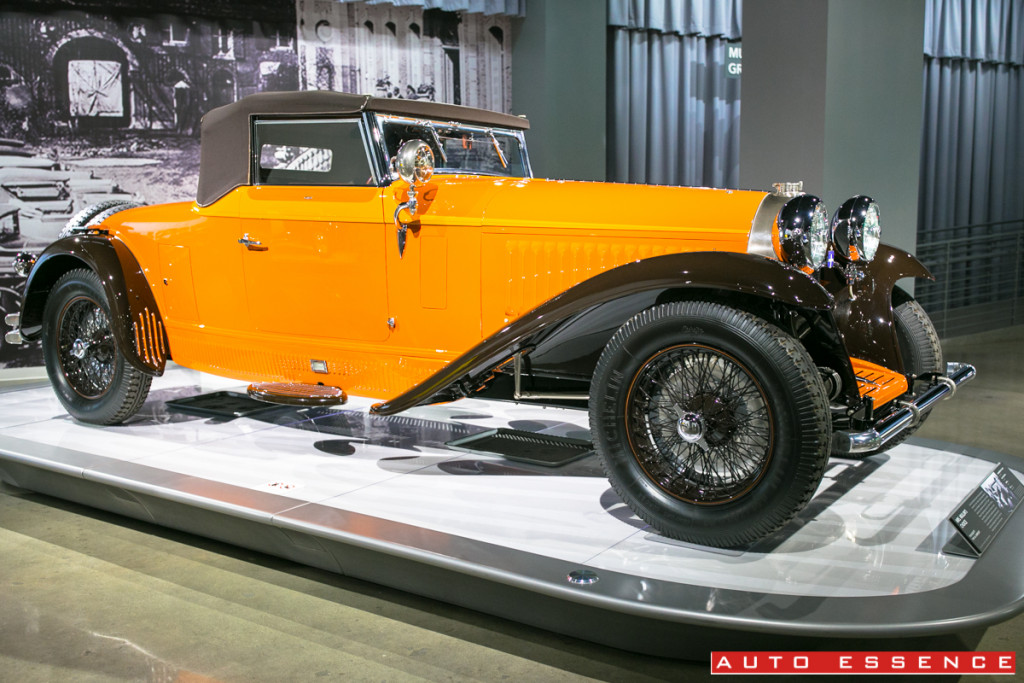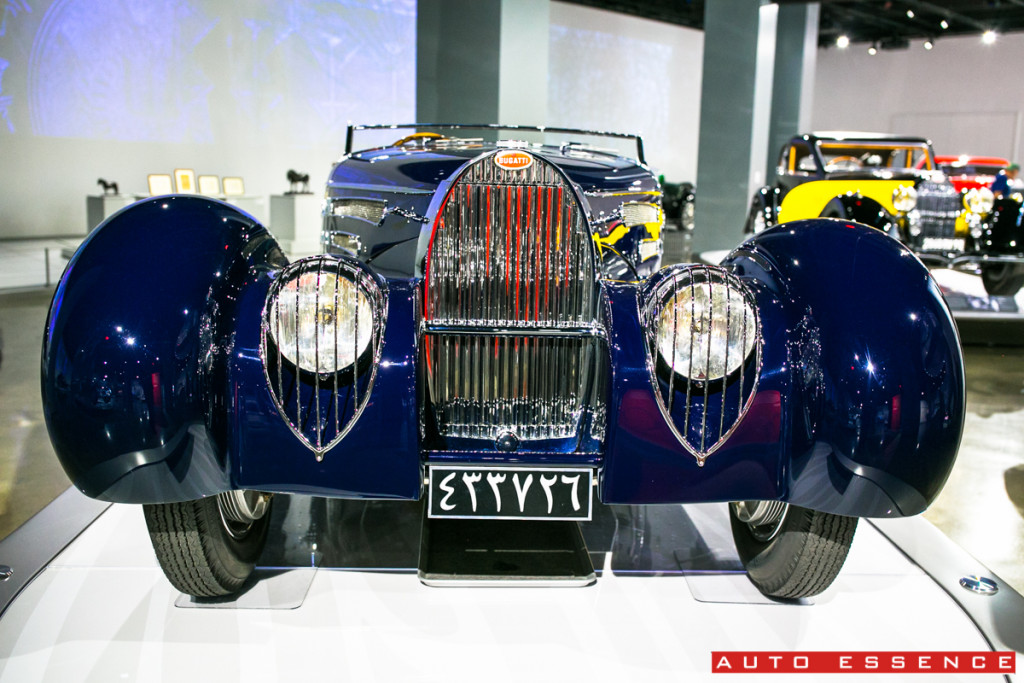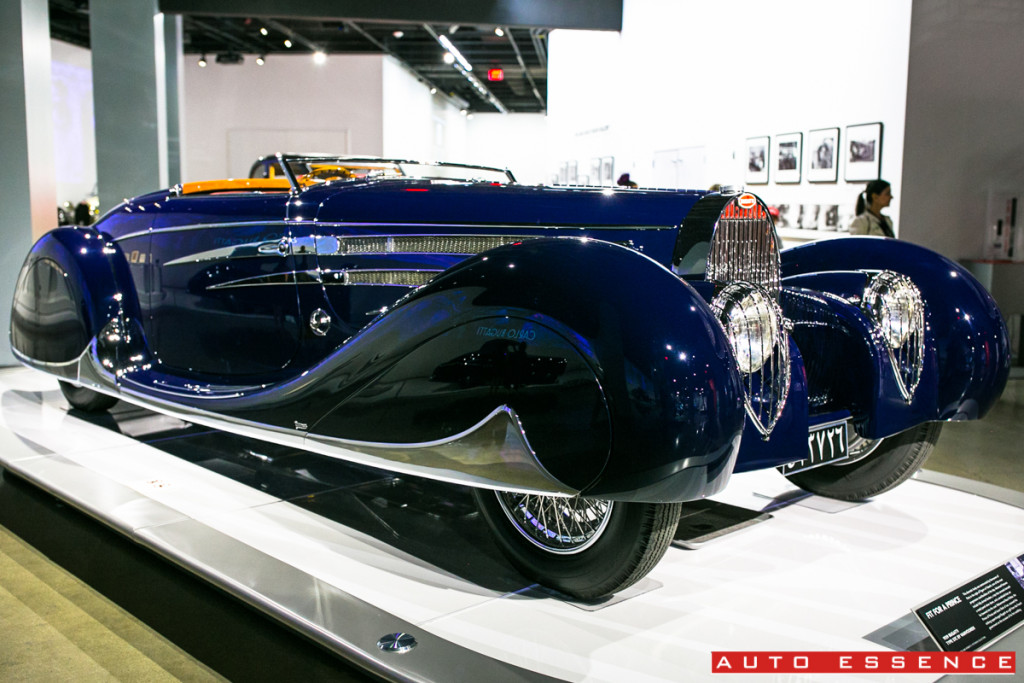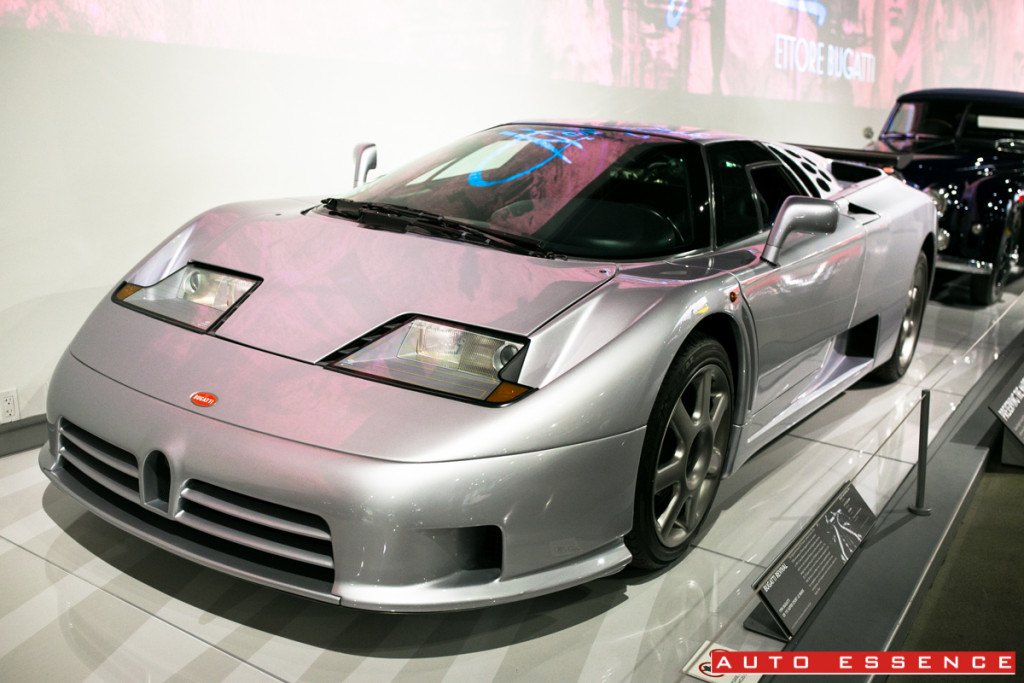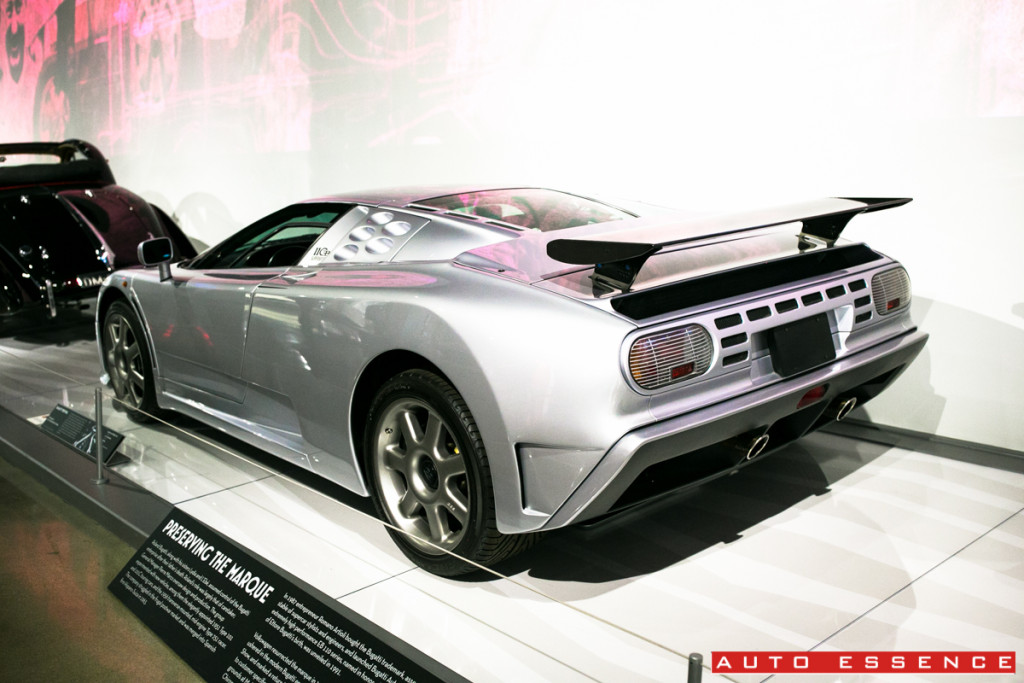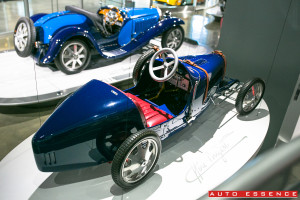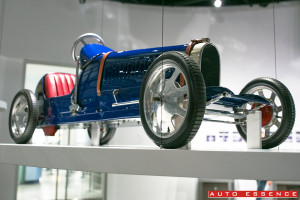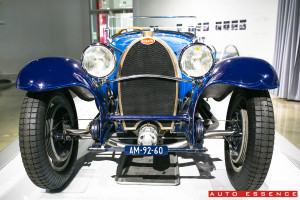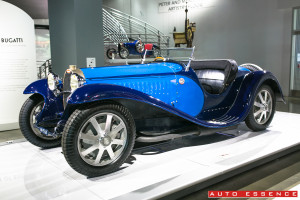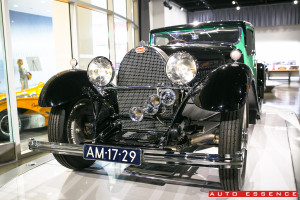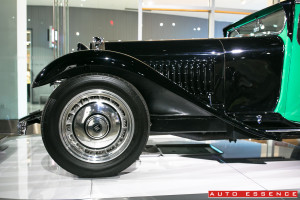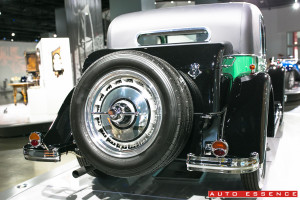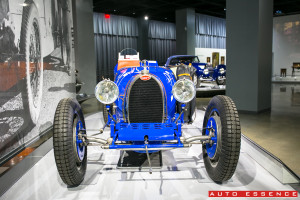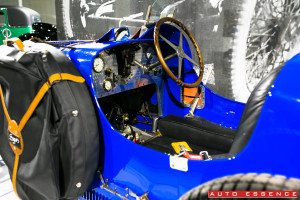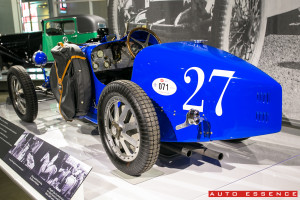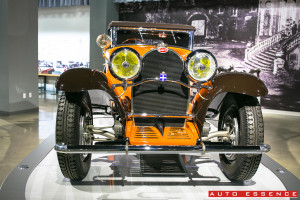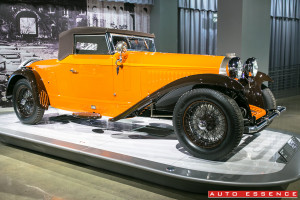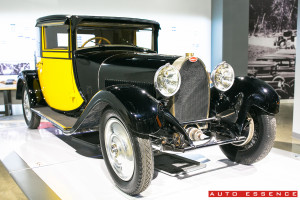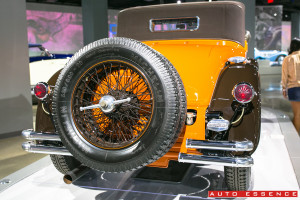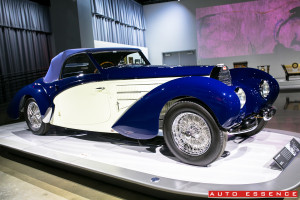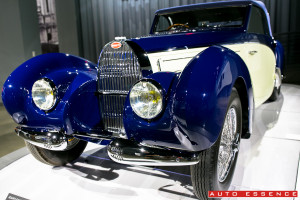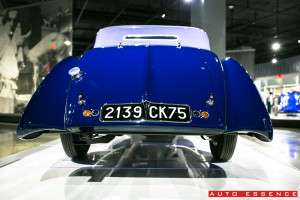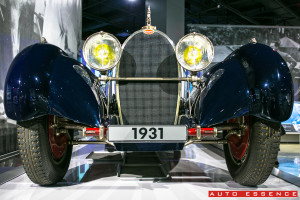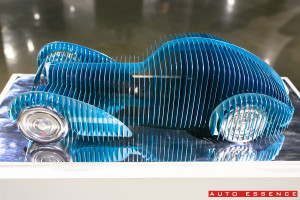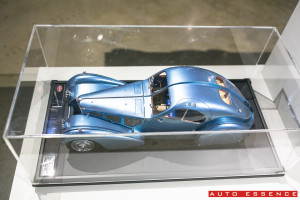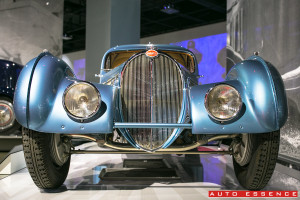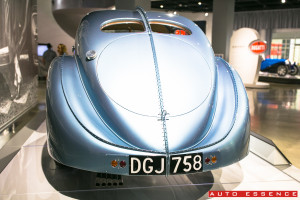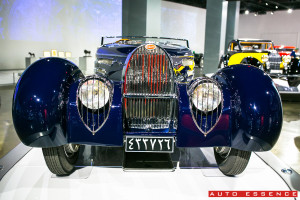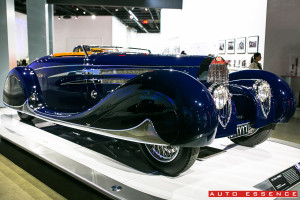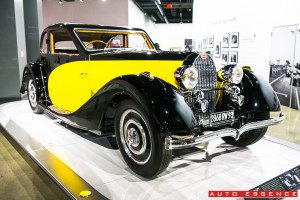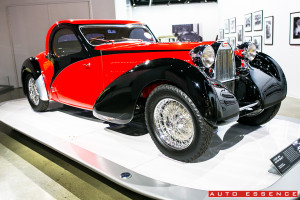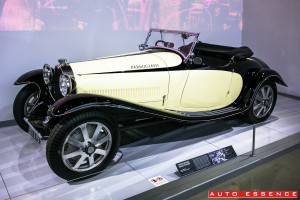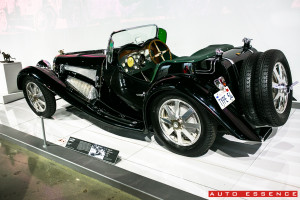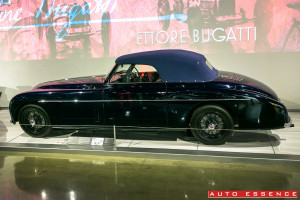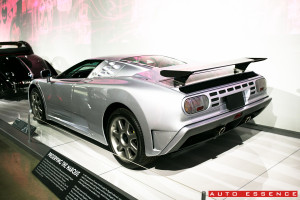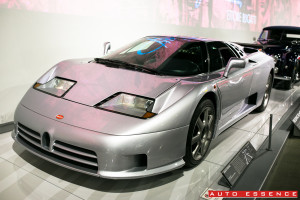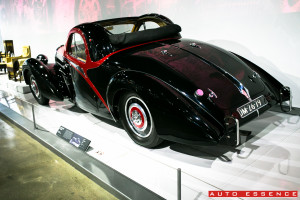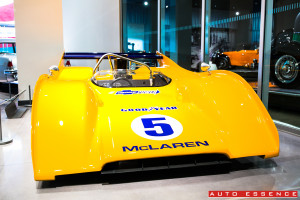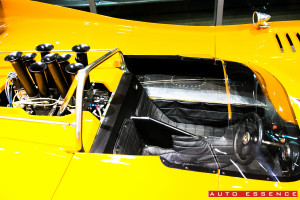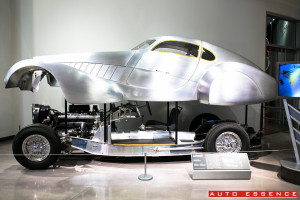Welcome to the final part of the picture post from our trip to the Petersen Automotive Museum in Los Angeles, California. The rebirth of this museum has been taken to a whole new level for the automobile. This final portion you will see the true pioneers of the automobile and sports car origins. The standards of the sports car began here! Enjoy the pictures that we took plus a few excerpts cited from the Petersen Automotive Museum!
“The Type 55 was the ultimate sports car, fitted with the same twin-cam supercharged engine used on the Type 51 Grand Prix car and cloaked in a sleek racing body accented by the refined touches of a luxury coach. Jean Bugatti’s love for sporty, luxurious lines is manifest in this Grand Prix-style coachwork, which is characterized by long, sweeping fenders, Grand Prix wheels with integrated drum brakes, a rounded tail, and a spare wheel mounted on the rear. This car looked and ran like a race car and set a standard for sports models of the day.”
Via Petersen Automotive Museum
“The Type 50 continued Bugatti’s established luxury vehicle design precepts, but differentiated from its predecessors by having a supercharged engine designed by Ettore Bugatti. The use of inclined valves, inspired by the Millers that raced successfully at Monza, made the Type 50 so powerful the British Bugatti agency was reluctant to sell them for use on tiny British roads. This custom body resembles the style of the factory’s Fiacre designs, which were created by Jean Bugatti.”
Via Petersen Automotive Museum
As the Great Depression spread to Europe, Bugatti saw the need for a more “realistic” grand touring model that was more affordable and accessible than previous models. Essentially a scaled-down version of the 1927 Type 41 Royale, the Type 46 was produced from 1929 to 1933 and was available as a cabriolet, sedan, limousine or coupé. This Type 46 is fitted with convertible coupé coachwork and has a rumble seat. Its more traditional coachwork honors the Jean Bugatti style. Only sixty of nearly five hundred Type 46s are known to have survived.
The Ventoux body style was one of the purest of Jean Bugatti’s design concepts for the Type 57 series, owing much of its style to his dramatic Profilée design for the Type 50. In 1950 this car joined the private Dovaz Collection on a farm near Paris, where it sat in a barn, undisturbed, for almost four decades. The 1986 German photography book, “Sleeping Beauties,” publicized the discovery of the collection, creating unwanted attention for Dovaz who then moved the collection to another hidden location. This car was auctioned in 1993 and restored by Bugatti expert Andre Lecoq.
The high performance EB 110 series, named in honor of the 110th anniversary of Ettore Bugatti’s birth, was unveiled in 1991. It was billed as the most technologically advanced sports car ever produced thanks to its ultra-modern body design that evoked the spirit of Molsheim-era Bugattis. This EB 110 Super Sport is one of three that were prepared for the 1994 24 Hours of Le Mans race. It has an upgraded engine for competition use and it is significantly light and more aerodynamic, with bodywork made of aluminum, carbon and Kevlar fiber.

